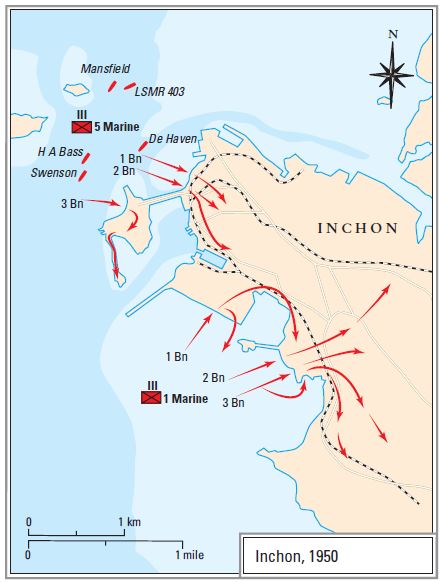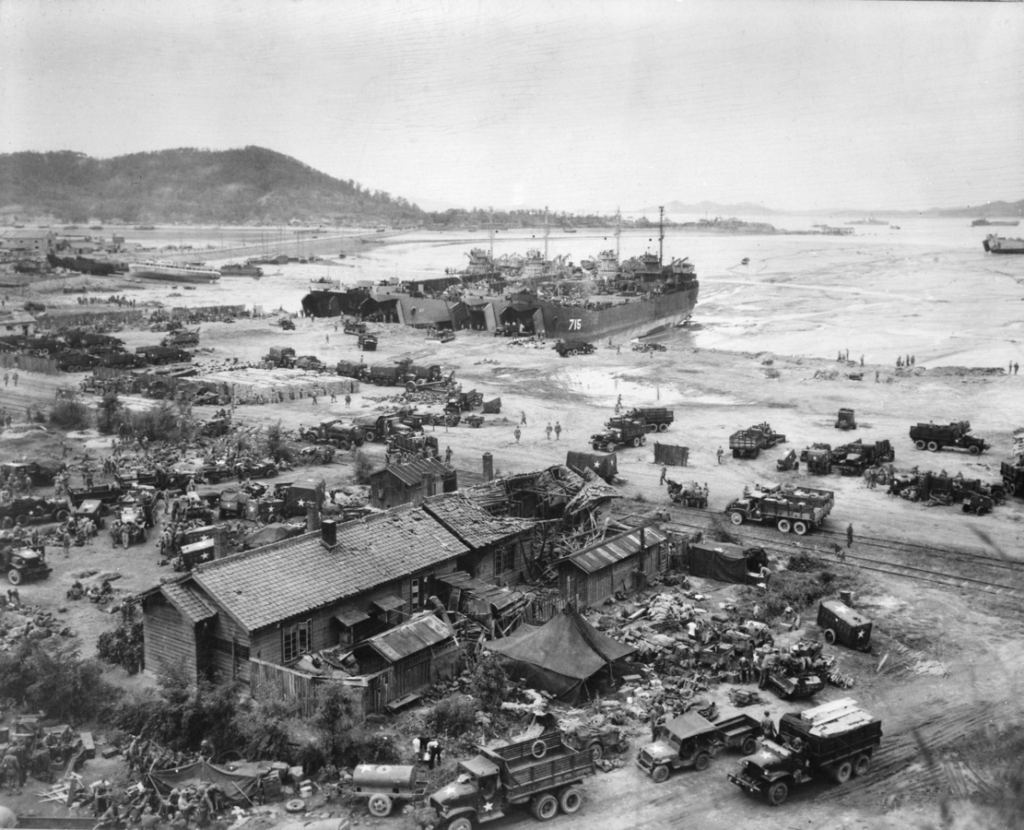Editor: Michael Spilling and Consultant Editor: Chris McNab
With the North Korean invasion halted, the US X Corps, led by MGen Edward M. Almond, had the task of planning an amphibious landing in the rear of the NKPA advance. Gen MacArthur wanted to relieve pressure from LGen Walker’s Eighth Army, ROKA and UN troops at Pusan. The generals selected Inchon, a Yellow Sea port 41km west of Seoul. The vital roads and railway hubs that linked the NKPA’s troops in the south with their supply lines in the north. MacArthur’s strategy was for a surprise landing at Inchon (code-named Operation Chromite) to flank the communists and threaten to cut off their armies, even as the Eighth Army led a breakout from the Pusan Perimeter and pushed north.

The landing force included more than 8000 South Korean augmentees, as well as the 1st Marine Division and the US Army’s 7th Infantry Division, stationed in Japan. The ROKA 17th Regiment was in reserve, with no other reinforcements available in case the landing was strongly opposed. The gamble was serious. It required the UN to commit its only combat-ready reserves to an operation fraught with difficulties. McArthur’s plan roused the objections of some of his staff. Particularly the naval warfare experts of Task Force 77, who noted the Yellow Sea’s hazardous 9.1m tides, coastal sandbars and mudflats, and the difficulty of mounting a full-scale amphibious landing into an urban area with a high seawall.
The Amphibious Assault on Inchon Begins
Complicating the plan, North Korean attacks had pinned down the Eighth Army’s divisions, blunting the strength of the Pusan breakout. Walker was forced to delay his push north until after the landing force had established the Inchon beachhead. Meanwhile, informed by spies on Yonghung Do Island on the Inchon approaches, the UN task force knew it confronted an NKPA force totaling approximately 2000 men. Keystones to the area’s defenses were the fortifications on Wolmi Do Island (planned site for the landing operation’s Green Beach). US Marine Corps’ F4U Corsairs attacked with double loads of napalm (43,091kg in total), burning out the western half of the island.
On the morning of 15 September, the initial wave of a 70,000-man invasion force completed the first major amphibious assault since the World War II landing at Okinawa (1 April 1945). The Marines of 3rd Battalion, 5th Marine Regiment, 1st Marine Division, supported by nine M26 Pershing tanks, overwhelmed Wolmi Do’s garrison of approximately 400 NKPA marines and artillerymen.

The UN Task Force Seizes Wolmi Do
By 08:00, the UN task force had seized Wolmi Do and the causeway connecting it to Inchon. Two other assault waves, involving 500 landing craft, carried the 1st and 5th Marine Regiments to Red and Blue Beaches on the north and south of the city. Naval artillery from the cruisers HMS Jamaica and USS Rochester battered the communists as the UN troops hit the beach. At Red Beach, 5th Marines clambered over the seawall and overcame stiff resistance to capture the high ground of Cemetery Hill and Observatory Hill. At Blue Beach, naval rockets silenced an NKPA mortar team that had destroyed one of the landing craft. Subsequently, 1st Marines seized the main road to Seoul.
A Complete Success
With the beachhead established, a major logistical operation got underway. By the seventh day, the task force had landed 53,882 people, 6629 vehicles and 25,512 tons of cargo. The battle had cost the UN 222 casualties, including 22 killed. The North Koreans, taken completely by surprise, endured more than 1350 casualties.
Dr. Chris McNab is the editor of AMERICAN BATTLES & CAMPAIGNS: A Chronicle, from 1622-Present and is an experienced specialist in wilderness and urban survival techniques. He has published over 20 books including: How to Survive Anything, Anywhere. An encyclopedia of military and civilian survival techniques for all environments. Special Forces Endurance Techniques, First Aid Survival Manual, and The Handbook of Urban Survival.
